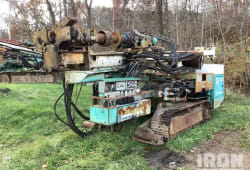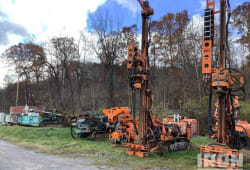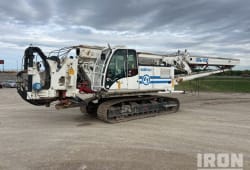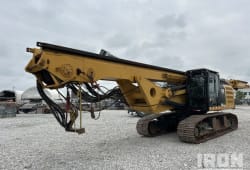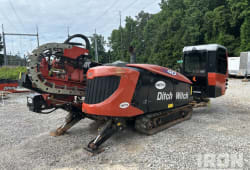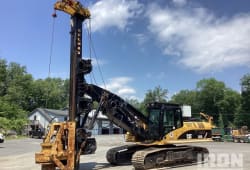All About a Boring Machine and How Does It Work
9 Min read
)
June 30, 2023
Boring machines are versatile and crucial equipment for many business and production approaches. They carry out the vital project of drilling and machining holes in unique materials with specialised lowering and dull system tools. In this text, we will find out what dull machines are, how they paintings, and their diverse packages for the duration of industries.
Understanding Boring Machines
Definition of a Boring Machine
Boring machines are specialised equipment used in industrial, manufacturing, and advent techniques to make particular and correct workpiece holes. They rent diverse cutting and uninteresting gadgets that drill into the fabric and remove the extra material to create a hollow with the preferred size and form.
Boring machines are used in many industries, including aerospace, automobile, and production. They are essential in growing components, including engine blocks, cylinder heads, and hydraulic cylinders.
Types of Boring Machines
There are numerous dull machines, each designed for specific programs and materials. Some unusual types include horizontal stupid machines, horizontal and vertical gadget boring machines, deep hollow dull machines, tunnelling machines, and jig borers.
Horizontal boring machines are generally used to create massive holes in heavy workpieces. They are commonly used to manufacture large structures, including bridges and homes.
Vertical boring machines, however, are used to create holes in smaller workpieces. Vertical and horizontal uninteresting machines are generally used to manufacture engine blocks and distinctive vehicle components.
Deep hole stupid machines create holes with an intensity-to-diameter ratio of more than 10:1. They are usually used in manufacturing gun barrels and hydraulic cylinders.
Tunnelling maTunnellinglso, also called tunnel boring machines or milling machines in some locations, manufacture tunnels for transportation and mining. They are capable of dulling through diverse types of soil and rock.
Jig borers create unique holes in workpieces. They are usually used in the manufacturing of aerospace and other high-precision components.
Critical Components of a Boring Machine
A regular, uninteresting machine includes the following key components:
The base or body helps the device shape and presents balance.
The spindle helps the reducing device and rotates excessively to create the hole.
Depending on the fabric and application, the reducing device may be a drill, dull bars, or exceptional specialised equipment.
The worktable helps the workpiece and movements and gives tremendous tips on ensuring particular and correct drilling.
The coolant device reduces the warmth generated by drilling and lubricates the cutting device.
The base or frame of a run-of-the-mill bar is commonly made of cast iron or metal, which provides essential pressure and stability to the tool. The spindle of a horizontal dull mill is frequently driven by an electric motor, which rotates the lowering device at excessive speeds.
The lowering device is typically made of high-speed steel or carbide, which may resist the excessive temperatures and pressures generated at some stage within the drilling approach. The reducing tool is held in place by a tool holder, which may be adjusted to achieve the desired intensity and diameter of the hole.
The worktable of a run-of-the-mill device may be moved in unique directions, such as up and down, left and proper angles, and forward and backward. This allows the machine to create holes with incredible angles and orientations.
The coolant system of a boring gadget is essential in decreasing the warmth generated through the drilling technique. It also facilitates lubricating the slicing tool and removes the chips and particles generated at a few levels in the drilling system.
Overall, dull machines are essential in a considerable range of industries and applications. They can develop specific and correct holes in workpieces of numerous sizes and substances, making them a vital tool for modern-day production and creation procedures.
The Boring Process Explained
Preparing for Boring
The first step in any dull operation is to prepare the workpiece and the gadget. This involves assessing the material hardness and thickness, selecting the proper slicing and uninteresting tools, and aligning the workpiece on the pinnacle desk-type dull tool or mattress.
Assessing the fabric's hardness and thickness is essential in identifying the shape of the lowering tool and the spindle pace required for the tedious method. For example, if the material is too tricky, a diamond-tipped decreasing tool is more suitable than a high-pace metallic device. Similarly, a slower spindle speed may be required to avoid overheating the lowering device if the fabric is virtually too thick.
Selecting an appropriate slicing and uninteresting system is likewise essential in achieving correct and particular results. The lowering device must be sharp and sturdy enough to face up to high-tempo rotation and pressure at some unspecified time in the future of the dull system. The stupid tool, instead, should be of the right size and form to create the desired hole dimensions.
Aligning the workpiece on the system mattress is vital in ensuring the dull manner is executed accurately and successfully. The workpiece should be secured firmly at the precision uninteresting device mattress to save you from any movement at some unspecified time in the future of the dull way, which could bring about inaccuracies and defects inside the final product.
The Boring Operation
The tedious process involves rotating the spindle at high speeds and concurrently shifting the slicing tool into the cloth. This technique removes the extra fabric and creates a hollow within the workpiece. The cutting rate, feed rate, and spindle pace must be carefully managed to ensure correct and particular effects in the vertical stupid mill.
Different materials and hollow dimensions require precise reducing speeds, feed fees, and spindle speeds. For instance, a larger hollow diameter might need a slower feed price to prevent the decreasing device from overheating and breaking. Similarly, a softer fabric could require a faster-lowering pace and spindle pace for green fabric removal.
The operator should also constantly screen the uninteresting method to ensure the cutting tool is intact and worn out. Any defects or abnormalities in the hole created must be addressed immediately to avoid compromising the final product's quality.
Finishing and Quality Control
After completing the tedious operation, testing the first-class and accuracy of the hollow created is critical. This consists of measuring the diameter and depth of the hollow using specialised gadgets, checking for any defects or abnormalities, and ensuring the floor end meets the desired requirements.
The diameter and intensity of the hole should be measured to ensure they meet the preferred specifications. Any specification deviations should be corrected to avoid compromising the final product's capability and protection.
The ground end of the hollow needs to meet the preferred requirements. A clean surface end is essential in preventing damage to the final product, especially in programs that require excessive precision and accuracy.
Quality management is critical in ensuring the last product meets the preferred requirements and specs. Any defects or abnormalities must be recognised and corrected before launching the product.
Applications of Boring Machines
Boring machines have extensive applications in numerous industries. They are acknowledged for their precision, accuracy, and efficiency in growing holes and tunnels. In this text, we can learn about some of the most common packages of boring machines.
Manufacturing and Industrial Uses
Boring machines are widely utilised in manufacturing, specifically in manufacturing complicated factors and additives that require precise and correct holes. They are used in the automobile, aerospace, and protection industries for production engine blocks, cylinder heads, and one-of-a-kind additives. Depending on the project's requirements, these machines can create holes of various styles and sizes. They can also drill through different substances, including metal, plastic, and wood.
One of the blessings of using uninteresting machines in production is that they can create holes with excessive accuracy and repeatability. This way, the additives and components produced via these machines are regular in length and form, which is critical for ensuring the quality and reliability of the last product. Boring machines can also grow holes with an excessive floor end, reducing the need for introduced operations.
Construction and Infrastructure
Boring machines are also used in manufacturing and infrastructure tasks, including tunnelling, excavation, and drilling. They can create underground tunnels, shafts, and boreholes for several features, collectively with transportation, utilities, and mining. These and other stupid machines are mainly useful in city regions where space is limited and conventional excavation strategies aren't viable.
One benefit of using unused machines in construction is that they can create tunnels and shafts with minimal disruption to the encircling surroundings. The machines can bore through the floor without damaging the ground, reducing noise and vibration ranges. Boring machines can also develop tunnels and shafts of diverse styles and sizes, making them suitable for many programs.
Mining and Tunneling
Mining operations depend closely on dull machines to extract minerals and ores from underground deposits. These machines can bore through rugged rock and soil to create tunnels and shafts to access the deposit. They are also applied in tunnelling and dull operations to build underground transportation and software networks.
Boring machines used in mining and tunnelling are commonly more extensive and powerful than those used in manufacturing and construction. They are capable of drilling through complex rock and soil, which requires a large amount of power and torque. These machines are also equipped with advanced sensors and monitoring structures, which permit operators to reveal the drilling gadget in real-time.
In giving up, uninteresting machines are crucial tools in various industries, including manufacturing, production, and mining. They appear for their precision, accuracy, and performance in growing holes and tunnels of diverse styles and sizes. As technology continues to bolster, we will count on seeing more excellent progressives using stupid machines in the future.
Advantages and Limitations of Boring Machines
Precision and Accuracy
The number one gain of stupid machines is their potential to supply unique and correct holes with high repeatability. This guarantees consistency and the best manufacturing and production methods. Depending on the software program requirements, they can create holes in various styles and sizes.
Speed and Efficiency
Boring machines can bore a couple of holes simultaneously, lowering the time and effort required for the operation. They can also bore holes through rigid materials, saving time and difficult painting costs.
Limitations and Challenges
Boring machines have some inherent barriers and demanding situations, including restricted access to tight spaces, problems with using precision boring machines for non-cylindrical shapes, and the need for specialised slicing tooling for unique materials and programs.
Conclusion
Visible, uninteresting machines are vital in the production, manufacturing, and mining industries. They carry out the crucial assignment of making precise and correct holes in several materials with pace and efficiency. While they have some obstacles and challenges, they have versatile and critical equipment for many packages.


